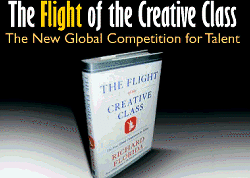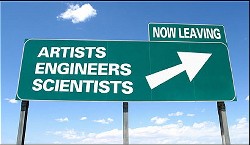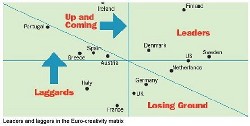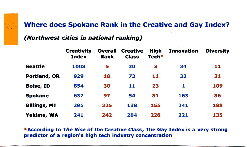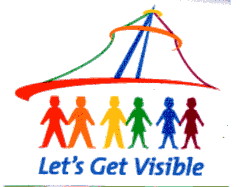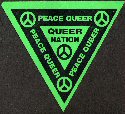version 0.1 (abstract) | 25/05/2006
version 0.2 (script) | 07/08/2006
"Queer" phaenomena
A critical discussion about current uses of "queer" as an urban image factor, as a label for homonormative ambitions and as a cultural modifier
Intro:
With our contribution we want to introduce three phaenomena of the current queer discourse within our context. Each of these phaenomena stands for a specific perception (and use) of queer issues. It is our aim to discuss these tendencies and to reflect on their impact on queer politics and practice. Today there are big differences on what is meant with »queer«, between theory and common life, between personal practice and community sense, between different cultural, social and ethnic contexts. While for some »queer« is a funky term of a new form of cultural expression, others understand it as a term for political empowerment, while in some places the CSD parades are more or less reduced to commercial festivals, in other places these marches for equality and tolerance are threatened by prejudice, active intolerance and even violence. But are there the common goals and aims of our queer politics? What are the perspectives beyond the differences? We think that there is a need for an open and broad discussion about this, and we would like to give an input on this discussion.
(A short introduction of ourselves)
Background: We see a need for a common and critical discussion about current phaenomena. To approach this issue, our contribution will be part of a two-track tour through Poland and Germany, scheduled for august and september this year. The first track will come with the issues described here. Our next lecture will be in Poznań on friday. The second track will be held by people from warszawa in two stations in Germany, in Bremen and Hannover at the end of september. The aim of this second track will be to illustrate and discuss the current situation and issues of LGBTQ's in Poland. Both tracks are thus two different efforts to find a common approach on this discussion. They are organized by an informal network of LGBTQ activists from poland and germany.
What we mean with the term "queer":
About queer, reduced to our common denominator (you can spend terrific time in debating the question „What is queer?“)
In our conception, the idea "queer" covers more than the relations and experience of gender and sexuality. Queer can also be understood as a tactical, temporary coalition against unequal and unjust states of the society. That means to observe, to criticize and to change from a queer perspective the relations of power and oppression, the restraint of normalisation and heteronormativity as well as the repression of politics and economy. But as important as to use the tools and tactics of queerness for political activism is the critical review on our own ways we think and act.
As examples of the current use of "queer" we want you to introduce three aspects in this context, afterwards we take a look on possible questions (and answers), that we would like to discuss with you.
Queer as an urban image factor
A vivid urban queer scence can be understand as a positive factor for urban developement and marketing. An american scientist, Richard Florida, created a so-called »Creativity Index«, where a "gay index" is one decicive factor. In this logic only cities with a tolerant climate for non-straight communities can reach a good »Creativity Index« ranking. Beside culture, art, creativity, tourism, nightlife and lifestyle the images of gay cultures are used for a tolerant and open-minded image of the city. The yearly gay pride parades became an obvious part in the calendars of events of the cities. In this sense queer cultures contribute to an ideal of diversity for the creative city. But how affects the transformation and re-definition of the city into a corporate city onto the gay community respectively the queer life in the city? The discovery of queer life as a location factor promises more importance and perception and within the chance to take part in public and social life, but there's to question and reflect which parts of queer life are appreciated and which are further marginalized and put under a taboo.
the analysis and theories of florida are accepted as an instruction manual to reach economic prosperity. urban development and city management try to create an environment and atmosphere of diversity and creativity to foster the settlement of creative industries. this can be illustrated by the example of spokane, a small town in the us-state washington. after florida spoke there a few years ago, spokane civic leaders embraced many of his ideas and pushed hard to create a university district and several arts districts near downtown.
actually spokane gay activists are planning to create a neighborhood of gay-oriented homes, businesses and nightlife. the Inland Northwest Business Alliance, an association of gay and gay-friendly businesses, is pushing the idea of a gay district. they argue with florida that a gay district would signal that spokane is tolerant and progressive. places such as san francisco, boston, new york and seattle have the image as an cultural and ethnic diverse place including a large population of gays. places such as spokane generally do not.
spokane and spokane region is about 90 percent white, not a good condition to reach a high diversity rank. assuming that the gay community is anywhere 5 – 10 % of a community, the Inland Northwest Business Alliance added the LGBTQ community to the people of color community to raise the diversity percentage to more than 15% of the community. because the largest ethnic group in spokane and region is less than 3 percent of the population, the LGBTQ community becomes in this addition the largest diversity group. in this logic the gay community of spokane is the only diversity group with the numbers that could develop and support a specific district.
even if the city government of spokane is not exactly pushing the notion of a gay district, the Inland Northwest Business Alliance and the economic development office for spokane agree in the point that a gay community can attract the so-called creative class that will build the economy of tomorrow. a gay district will promote the notion that such a community can still be tolerant and have diversity argue the members of the Inland Northwest Business Alliance and the city development officer agrees in the way that it is the city’s desire to create an environment where diversity and different interests and lifestyles of all types can flourish.
the Inland Northwest Business Alliance represents the idea of a gay district on the website letsgetvisible.com. visibility is an important keyword and slogan for the campaign. only a visible gay community can show a great amount of tolerance. homosexuality becomes a measure to define tolerance which is - according to richard florida - one of the diversity indicators that creative, open-minded professionals look for in a community. out of this the Inland Northwest Business Alliance constitutes the claim to create a gay neighborhood that will visualize the tolerance, diversity and creativity in spokane – and will make the own business a good deal better.
additions & sources: /UrbanImageFactor?
Queer as a label for homonormativity
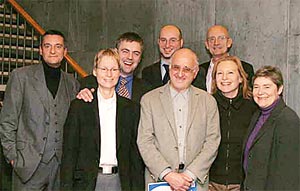 the "initiative queer nations", founders and members of the board of trustees
the "initiative queer nations", founders and members of the board of trustees
The second part is an example about a current gay and lesbian efforts to stablize and establish their position in Germany. One current effort is an initiative to establish a »Queer Nations« institute by german mainstream gay and lesbian representatives
This initiative claims to build a central institution of research of homosexuality. Quote: "The aim of the association is to further study and research into the history and the sociology of homosexuality, along with public awareness for subject, in order to advance the equality of people of differing sexual orientations." (charter of the initiative) Supporters of this initiative are academics on social sciences, journalists, actors and other media VIP's.
The name of this institute has a strange double meaning -- Queer, which stands for more, than just for a gay and lesbian sexual orientation and Nations, the construction of a spatial and political entity. There has been other uses of the term "queer nation" before, a short comparision might be useful to approach its latest use.
(The transformation of a term and its visualisation)
The political movement queer nations in US in the early 90s was a follow up of »act up« campaigns, which has been a reaction on the AIDS crisis and where people with diverse backgrounds took action against "ignorance and fear" in the society. Queer nation was a kind of continuation, but with a different focus on anti-gay and lesbian discrimination. It was organized in chapters in major US-cities, it used direct and media action in public space to fight against homophobia and hatespeech. One famous slogan was "We're here. We're queer. Get used to it." After a few years, these groups disappeared. Quoting a critique of these groups: (...) "they ultimately collapsed under the weight of their contradictions: 'queer', after all, means 'diversity', whereas 'nation' implies 'sameness'" (Susan Stryker)
- You can see a green, triangel logo, which comes as a trashy, 80s DIY-mashup with "alternative" symbolism, the peace sign and the (pink) triangle, the sign of gay inmates in concentration camp.
In England and Australia, they are parties called "Queer Nation", with a mainly male gay audience
- The Queer Nation party series at London in the 2000s comes with a black and white logo, it works with a punkrock typographic style, readable as subcultural or subversive
And the queer nations initiative in germany in 2006
- an coporate design agency way of making a logo, cornerless, round form, unintrusive colors, very neutral on impact and meaning (it doesn't hurt), a form that could be used for arbitrary uses
Of course all three uses of this word are not linked directly to each other, it is more interesting how concepts and visualisation varies from one context to the other.
How the concept of the initiative "queer nations" can be assessed?
After the area of »Gay liberation« in the 70s, the fight against »ignorance and fear« during the upcoming of the AIDS pandemia in the 80s, and the gay marriage campaigns during the 90s, gay and lesbian mainstream activists in Germany seems to lack of further perspectives. While homo- and other sexual derived phobia, hatespeach and hatecrimes are not vanished in german society today, media and the mainstream discourse has accepted certain forms of gay and lesbian cultural presence. The protagonists of this presence endeavor to fortify their positions (external as accepted and tolerated parts of the society, internal as opinion leader), while they adfirm common (mis-)interpretation of non-heterosexualities and while they exclude different concepts and understandings of »non-straight«
- It is noticeable, that the protagonists are all playing a "good conduct" in public. Such "playing" of good conduct of the protagonists could be read as a strategy: Beeing monogamic, working and successfull, neutral on sexual aspects (a-sexual), and at the first glance neutral on all aspects of politics execpt the own identity politics
- But on the second glance it has of course another, broader political dimension: Even if their focus is on identity politics, it transports general political values and notions. Values like european, western centric lifestyle and morality, which excludes or degrades non-western cultures and non-yet-assismilated, »lagging« cultures
- (An example: Protoganists of the initiative like the journalist Jan Feddersen have a focus on migrants with an arabic, islamic background and their »basic or natural homophobic« attitude. That perception might be reasonable on certain events and perception, and it scratches the problem of different cultures in a same spatial context, but it transports settings of right / modern / leading and wrong / backwards / lagging cultures.) and makes use of racial attributions.
Critics of the initiative, like the "lesbian-feminist-queer academic network", reject a concept, which is based "on patriotic-nationalistic signs" and fixed on a "assimilative perspective of normalization and integration"
According to this crititque, the initiative "Queer Nations" seems to be an effort to normalize and establish gay and lesbian culture in the "heart" of german society, while exluding non-western and non-binary (hetereo, homo) cultures. It is, so to say, a project "to freeze social identities and to eliminate the claims of equality" (Brian Holmes). We have to ask further questions: What are the intentions behind these efforts of normalization, of "homonormativitiy" (L. Duggan), and what consequences on the meaning of queer, the rights and awareness of other arouse from this? Are resarches of history and sociology, are such "politics of identity and assimilation", as critics say (E. Stedefeldt), the final word of "gay" liberation? What could be different, open and further tracks of development, not based on consensus but on dissent?
additions & sources: /LabelForHomonormativity
Queer as a subcultural modifier
So we heard how queer visibility can be part of a creative, exclussive class and how concepts and visualisations vary from one context to the other. Our inquiry and critique on the label queer and its signs are also concerned with representations of queer in subculture. My field of interest are the effects that queer signs produce when they are used in the transition to mainstream-contexts. Do these effects irritate, do they normalize or do they become any given meaning?
The following images will be used to illustrate how subcultural expressions of 'queer' carry a lifestyle that is increasingly established in music, in the arts, in films and in other fields of cultural production. (the next pictures are taken from the band 'Tempeau', a domestic, subcultural band from Hamburg, two different pictures are from live shows, and one is a studio photograph which is part of a promotional campaign)
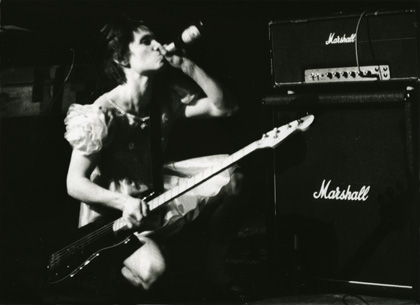
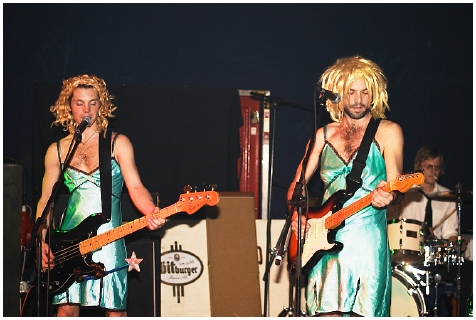
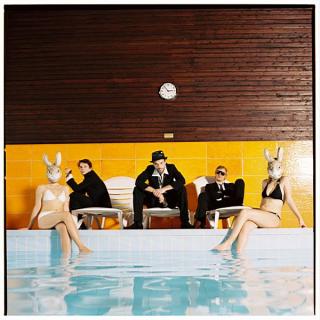 one band, switching between two different cultural codes: crossdressing in 2005, playboy style in 2006
one band, switching between two different cultural codes: crossdressing in 2005, playboy style in 2006
In several discussions, Thomas, Ulf and I turned to question how these images can be read. We assembled different aspects like 'very queer', 'erotic', 'playing with gender and sexuality', 'sexism' and 'extremely straight'. The force of the concept 'queer' seems to enable very different possibilities of meaning. We realized that queer signs of crossdressing, as shown on the first picture and - more 'trashy' crossdressing on the second picture are 'polyvalent': they offer different modes of reading. On the other hand the 'playboy-style' shown in the third picture (re)signs a heteronormative arrangement. This phenomenon can be described as a declining evolution of queer images: From the first picture on, we observe a revision of the concept queer, which finally seems to lead to a complete disappearance of the queer image in the third picture.
The different possibilities of reading an image depend on the context, its subtext, the space you stay in and the codes you know and work with. Sometimes only nuances, aroused by a slightly mismatched styling arrange the difference between a mainstream representation and a queer one – within the same context. An images' meaning also depends on your co-reading which bases on knowledge about how queer signs are used to look funky. I’m not really sure, whether the third picture must be read as the mentioned 'playboy-style' or as a quotation of heteronormativity or as a quotation of kinging. Considering this, we must discuss the question of whether or not there is a need for the distinction marks '‘queer image' and 'non-queer image' to enable a progressive potential in (queer) subcultural strategies.
If we understand queer as a critical term, camp and drag can express delight and joy as well as social and political intentions. In the example of the band 'tempeau', let us suppose male characters, who use queer strategies for their performance. The heteronormative males learned from drag and camp to take pleasure in a queer performance of their masculinity. Crossdressing does no longer mean awkwardness but 'hipness'. Here, the strategy as well as its political or social claim seems to be equal to the performers. I think they are more interested in an effect of temporary lifestyle, than in making a political statement. Their indefinite representation offers a plurality of addressing and projection and allows the performers' retreat in the case of any critiscism. Thus, the effect of the employment of a queer code and its consumption is a confirmation of heteromasculinity and heteronormativity. From this point of view, the drag strategies have failed by reason of appropriation.
As I have argued, queer images and signs, which were stigmatized earlier, have now become part of the mainstream. Up to now, addressing otherness, as well as performing the unnaturalness of heteronormativity were applied as suitable strategies against the repression of normalisation and homophobia. Now we face the question, if queer representation in subculture can still be influential. In other words, can visible queerness still challenge the normalisation when queer signs no longer have an obvious political impact?
I think ambiguous irritation and producing of uncertainty - if mainstream and queer use the same signs for different meaning of communication - could be a very effective queer strategy. Because of this, I don't comment the following pictures.
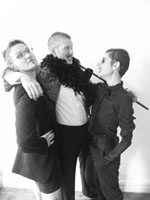 performance 'renee' 2005
performance 'renee' 2005 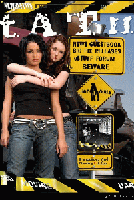 Tatu 2006
Tatu 2006
In current queer discussions, strategies against normalisation and de-politisation of signs focus on counterpublic modes like the production of new alternative contexts, readings and meanings by explicit, faster queering or requeering. Let me give you as an example Beatrice Preciados' term 'becoming invisible' as an act of becoming temporarily innoticeable in order to protect oneself against repression and embracement through neoliberal consumption. I rather hope she means by this that the 'invisible queer' tactical reappears - suddenly, surprisingly and incalculable – in order to experimental political acting. I hope she does not mean that queers' visibility should disappear alltogether, because addressing 'otherness' via queer images and signs is not only point of attack for mainstream, heteronormativity and neoliberalism. It is because queer visibility is simultaneous undispensible with the appearance of a different way of being, that is supported by the option to blend into queer images. Queer visibility must take place in public as well as in spaces that are safe, with the conscious risk of the temporary exclusion of the other in each case. The queer visibility I mean is not the visibility that supports a creative class.
In addition, the phenomenon of modifying subculture reminds us that we cannot criticise the embracement of queer signs by the mainstream without having a critical view on the effects of the concept of 'queer'. The absence of constant categories in queer does not only settle different significations which can be subversive - it can also settle a consumable flexibility that encourages demands of mainstream and normalisation. We have shown that queer can be a trouble-free part of the neoliberal plan as well as the aims of political economy – if this is what you like. If you do not like this, you must ask yourself, what a queer performance must look like when it is not incorporated by commodification.
additions & sources: /SubculturalModifier
/Questions
(copy and paste more questions here)
Questions for discussion (III)
- What can be understood as a political queer practise, for example in Hamburg and in Warsaw?
- Are cultural codes and expressions like style and fashion reasonable and effective strategies?
- Is normalisation undesired on principle?
Outlook
Queer could be understand as a "tactical, temporary coalition" (as the Critical Art Ensemble (CAE) described the political concept of Act Up coalitions).
Politics could be understand as a concept of dissent not of consensus
Such dissent has to "become more precise, more reasoned, more explicit, if the new claim to equality is to have any effect on the existing divisions of the world." (...) "It is to engage in an unstable mimicry that seeks to prove its claim to equality on a public stage, while inventing new signs, new pathways through the world, new political subjectivities." (Brian Holmes)
We would like to introduce two efforts to express such a "dissent". We don't introduce these samples, to say that they are perfect oder successful, but to discuss with you how possible tactics and actions could be done to develop such ways of "unstable mimicry"
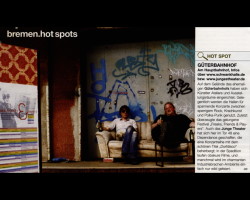
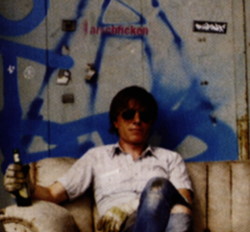
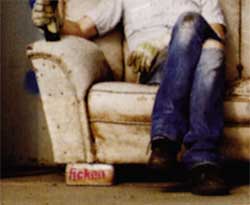 facsimile of an publication of a new "hot spot" of subculture in bremen. on the picture are traces of a past "tagging" the "hot spot" with words of sexual activities
facsimile of an publication of a new "hot spot" of subculture in bremen. on the picture are traces of a past "tagging" the "hot spot" with words of sexual activities
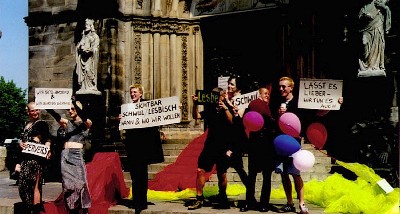 picture of a performance by bremen group "kraß" during "kontrolle der räume" opposing the campaigns for gay marriage
picture of a performance by bremen group "kraß" during "kontrolle der räume" opposing the campaigns for gay marriage
Persons
Our Panel is prepared and held by:
Thomas Böker, Bremen, cultural activist, co-organizer of the cultural center »zakk«, member of »kraß« (a queer project) and »city.crime.control« (group working on urban issues, city developement and public space)
Ulf Treger, Hamburg, cultural producer, member of the projects »city.crime.control« and »offene kartierung« (working an mapping and perception of urban space), volunteer and co-founder of »q-tipp« (a local plattform on queer culture at hamburg)
Christiane Wehr, Hamburg, artist, queer filmer, student of philisophy and queer studies at the university of Hamburg, member of »offene kartierung«
Translation by Jacek Galkowski, Warszawa
